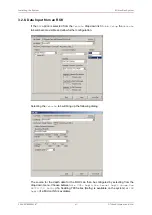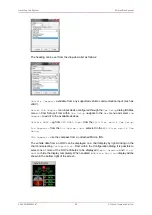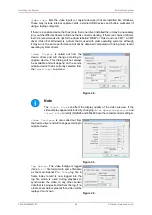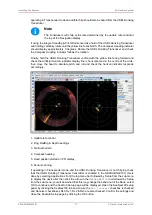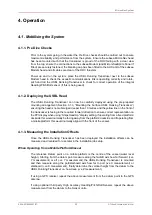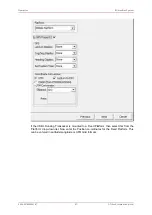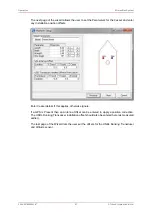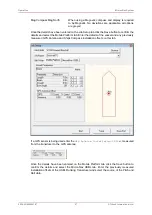
MicronNav System
0656-SOM-00001-07
55
© Tritech International Ltd.
4. Operation
4.1. Mobilising the System
4.1.1. Pre Dive Checks
Prior to the system going in the water the Pre Dive checks should be carried out to ensure
maximum reliability and performance from the system. Ensure the subsea MicronNav head
has been mounted such that the transducer is proud of the ROV fairing with a clear view
from the top, ensure the connections to the subsea Modem (and Micron/SeaSprite Sonar if
fitted) are securely fastened, the blanking cap has been fitted to the AUX port of the subsea
Modem head and all cables are clear of the ROV thrusters.
Power up and run the system, place the USBL Dunking Transducer next to the subsea
Modem head to check the acoustic communications link is operating correctly and rotate,
pitch and roll the USBL Dunking Transducer to check for correct operation of the integral
Heading/Pitch/Roll sensor (if this is being used).
4.1.2. Deploying the USBL Head
The USBL Dunking Transducer can now be carefully deployed using the pre-prepared
mounting arrangement (Section 3.1.3, “Mounting the Surface USBL Dunking Transducer”)
ensuring the head is not submerged deeper than 10 metres and the yellow line on the front of
the transducer is facing in the required forward direction to ensure correct representation on
the PPI display when using “Ships Head Up” display setting, if operating from a fixed platform/
dockside this would normally be facing away from the platform/dockside and if operating from
a mobile platform this would normally align with the front of the vessel.
4.1.3. Measuring the Installation Offsets
Once the USBL Dunking Transducer has been deployed the installation offsets can be
measured and recorded for use later in the installation job setup.
When Operating from a Mobile Platform/Vessel
The reference Datum point on a mobile platform is the centre of the vessel (water level
height). Starting from the datum point measure along the fwd/aft axis how far forward (+ve
Y measurement) or aft (-ve Y measurement) the USBL Dunking Transducer is mounted
and then measure along the port/starboard axis how far to port (-ve X measurement) or
starboard (+ve X measurement), finally determine the vertical height from the datum to the
USBL Dunking Transducer i.e. how deep (-ve Z measurement).
If using a GPS receiver repeat the above measurement from the datum point to the GPS
antenna.
If using optional third party High Accuracy Heading/Pitch/Roll Sensors repeat the above
measurement from the datum to the Sensor units.

